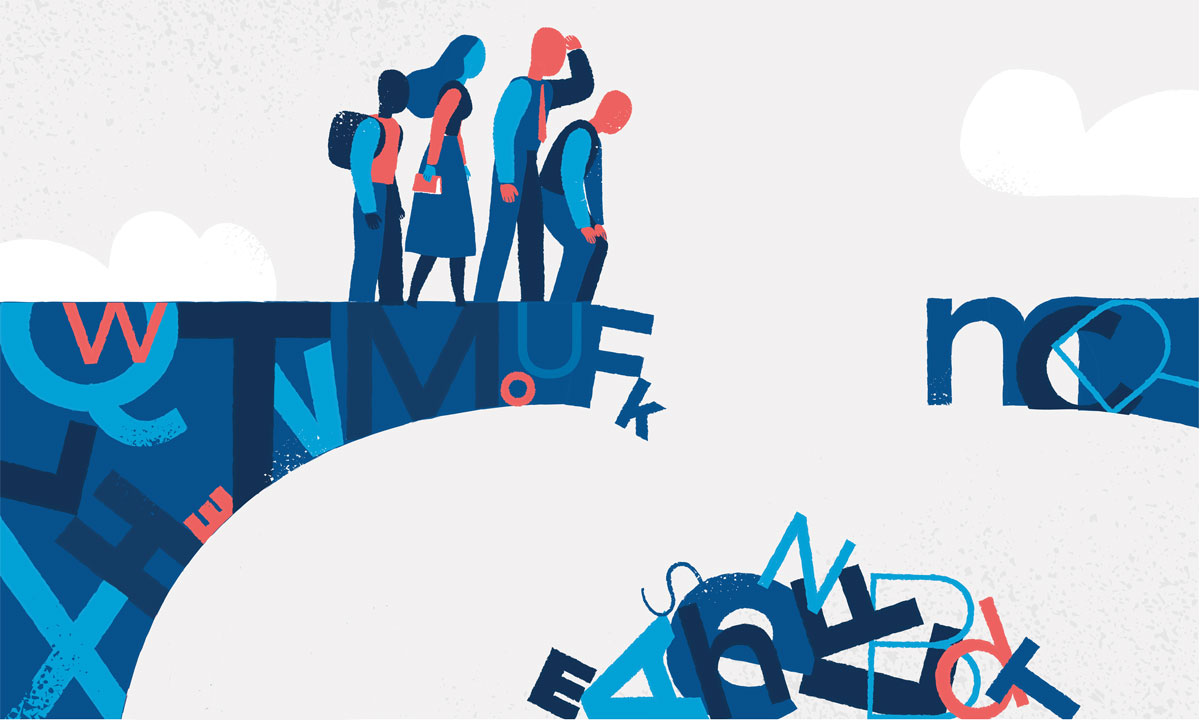As Schools Embrace Mastery Learning, and Confront Challenges of GPAs and College Admissions, Consortium Creates New ‘Bridge’ Transcript
The Mastery Transcript Consortium is now piloting a ‘Learning Record’ that lets a broader view of students accompany standard grades in applications.

Get stories like these delivered straight to your inbox. Sign up for The 74 Newsletter
Creators of a grading system that ditches traditional A-F grades for a new “mastery” transcript know that’s too big a leap for some schools to make, so they’ve created a “bridge” that can ease students, parents and college admissions officers into the shift.
“The single biggest barrier to adoption of the mastery transcript is that it’s perceived as risky, and kind of unfamiliar,” said Mike Flanagan, CEO of the Mastery Transcript Consortium, a national group that wants students to learn at their own pace and be rated continually on their progress, not just by snapshots when the calendar says a grading period ends.
Schools keep joining the consortium because they back the concept in theory, but few have been ready to throw out traditional transcripts and pin students’ college acceptance chances on a strange new transcript with no grades or grade point averages.
So the consortium has created a half step that it is piloting this school year — a Mastery Learning Record that can be sent to colleges along with traditional transcripts in college applications but still offers some of the depth and nuance of the mastery transcript.
“It can be used as a bridge or an on-ramp,” Flanagan said.
Eight-five high school seniors at nine schools used the new Learning Record in college applications this year, including seniors applying to state schools at Park City High School in Utah.
Principal Roger Arbabi said making the full shift to mastery grading right away “wouldn’t go well, even though Utah embraced the mastery concept and is encouraging schools and colleges to train staff in how it works.
“As a traditional public high school, we have a long way to go to be able to offer the full Mastery Transcript Consortium transcript,” Arbabi said. “Our stakeholders have not been educated on the model, but The Learning Record will allow us to … do a soft rollout.“
The mastery learning movement, and the transcript and learning record coming out of it, calls for schools to recognize that all students don’t learn academic and other skills on the same timeline. While some students might grasp a math concept quickly, for example, others might take longer and even until the next grading period or school year to master it.
On a standard report card, that could result in a poor grade even though a student is on the way to mastering a skill later. The new mastery transcript instead shows how far a student has progressed toward learning that skill, instead of assigning a low grade at a calendar-based cutoff.
The mastery report card also breaks from tradition by rating students in more than just a course or broad subject, but by many specific skills. Math, for example, includes evaluation of students’ statistical reasoning and scientific experimental design skills.
And the mastery report card includes broad, multi-disciplinary skills like “self-direction”, “generating solutions” or “synthesizing information.”
The Mastery Transcript Consortium keeps adding schools and districts as members, more than doubling from less than 200 schools in 2018 to more than 400 today. Some are using mastery approaches to help students recover from pandemic school closures. But most are just endorsing the concept or still learning it: Only 30 have made the full leap to the new style transcript. Almost 250 seniors at those schools applied to college this school year using it in place of the traditional transcript.
Flanagan said he’s seeing pushback from members about moving too fast and possibly jeopardizing student chances.
“(They’re) saying, ‘I don’t know that we’re ready for that kind of change. I don’t know if it’s worth it. Why don’t we just sort of play by the rules, because that’s what we need to do to get kids into Stanford?” he said.
The Learning Record is a scaled down version that skips listing courses and credits, but uses the same model of showing progress toward mastery of skills like cultural competency, critical thinking and academic mindsets. The Learning Record is also useful, Flanagan said, to show what students have learned in non-course programs, like after school or summer sessions, workshops or capstone projects.
The ability to show a well-rounded look at students is what drew John Clements and Mary Anne Moran, co-principals at Nipmuc Regional High School in Upton, Mass., to the transcript, then later the Learning Record. The school has six non-course goals for all graduates like being a “solution seeker,” “skilful collaborator” and “effective communicator,” that the Mastery Transcript can capture.
“The idea that an A in English 10 can only tell you so much about a student really resonates with us,” Clements said. “They have a larger story to tell than can be told simply through traditional metrics.”
The school gives traditional grades for its courses, they said, but 10 students were willing to help build a full mastery transcript this year for their applications. But the Learning Record avoided that need and six ended up using it along with their traditional grades.
“Without any negative consequences for our kids… it only provided a value-added additional look into who they were, as learners, community members and individuals,” he said.
Whether the full transcript is helping or hurting student chances is still unclear. The consortium says 285 colleges have accepted at least one mastery transcript application so far, including Harvard, the Massachusetts Institute of Technology and Duke.
Colleges are gaining familiarity with them, but still view them as an alternate form of application, like those of students from overseas or at other alternative schools, said Michelle Sandlin, interim associate director of the American Association of Collegiate Registrars and Admissions Officers. But she said colleges know they will have to adapt as they gain popularity.
“Yes, the concern by high schools is real for now, but competency based records are already well known at the college level,” Sandlin said. “The universities will develop admission requirements appropriately as they always have.”
Get stories like these delivered straight to your inbox. Sign up for The 74 Newsletter


